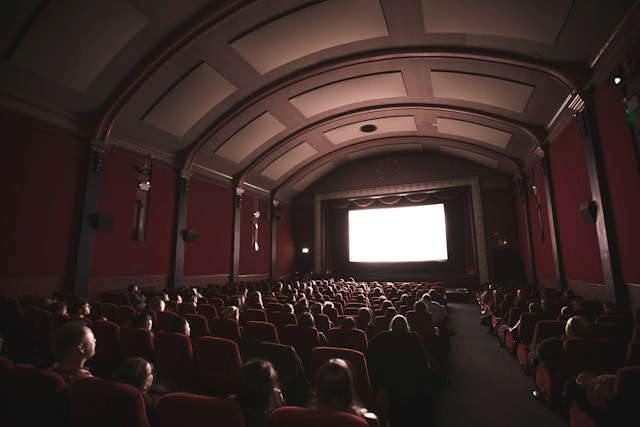Over the past few decades, music videos have transformed from straightforward performance clips into elaborate, cinematic experiences. Today, many music videos feel more like short films than promotional tools crafted with rich narratives, high production value, and emotional depth. But how did we get here?
The evolution of music videos into mini movies is a fascinating journey that reflects changes in technology, culture, and creative ambition. From Michael Jackson’s groundbreaking “Thriller” to Beyoncé’s genre-defining visual albums, let’s explore how music videos became one of the most dynamic storytelling formats in modern media.
The Origins of Music Videos
To understand how music videos became mini movies, we need to start at the beginning. In the 1960s and 70s, artists like The Beatles and Queen created early music video prototypes essentially filmed performances designed for TV. These were largely promotional, meant to give fans a glimpse of the artist in action.
In 1981, everything changed with the launch of MTV. Suddenly, music videos became the primary way for artists to promote their singles. The golden era of music videos began, with colorful visuals, choreographed performances, and a heavy focus on style. At this point, cinematic storytelling wasn’t a priority the goal was exposure and branding.
The Shift Toward Storytelling
The real shift toward cinematic music videos began in the 1980s and 1990s. Artists and directors started pushing the boundaries of what a music video could be. One of the earliest and most iconic examples is Michael Jackson’s “Thriller” (1983), directed by John Landis. Running at nearly 14 minutes, “Thriller” wasn’t just a music video it was a short horror film with costumes, dialogue, special effects, and plot.
From there, other artists began to experiment. Madonna, Prince, and George Michael all released music videos that mixed fashion, drama, and narrative. Directors like David Fincher and Spike Jonze brought a film director’s eye to the format, elevating the visual quality and storytelling aspects.
The Role of Technology and Budgets
The rise of digital filmmaking and editing tools played a huge role in the shift toward music videos as short films. In the 2000s, high-definition cameras and digital editing became more accessible, making it easier to produce visually stunning content on tighter budgets.
This democratization of filmmaking tools meant even indie artists could create music videos that rivaled mainstream productions. Today, a cinematic music video doesn’t require a million-dollar budget it just requires vision, creativity, and smart production choices.
At the same time, major artists continued to invest heavily in music video storytelling. Think of Lady Gaga’s theatrical videos like “Bad Romance,” or Kanye West’s “Runaway,” which spanned over 30 minutes and included surrealist imagery and symbolic narrative.
Music as Visual Art: Artists Leading the Trend
One of the biggest milestones in turning music videos into mini movies was Beyoncé’s “Lemonade.” Released in 2016, “Lemonade” wasn’t just a collection of songs—it was a full-length visual album, complete with themes of identity, empowerment, betrayal, and healing. Each track had its own visual chapter, interwoven with spoken-word poetry and high-fashion aesthetics.
Another standout example is Taylor Swift’s “All Too Well: The Short Film,” a 10-minute narrative video that tells a full emotional story using cinematic visuals, character development, and dialogue. The video was widely praised for its film-like quality and emotional storytelling.
Childish Gambino’s “This Is America” used powerful imagery and choreography to comment on gun violence, racism, and media distractions. The video’s layered symbolism sparked widespread analysis, demonstrating how music video storytelling can deliver potent social commentary.
In the K-pop industry, high-concept music videos are the norm. Groups like BTS and BLACKPINK release music videos that often feel like blockbuster trailers complete with action sequences, detailed sets, and interconnected storylines across multiple videos.
The Director-Artist Collaboration
As music videos became more cinematic, the collaboration between directors and artists also evolved. Today, many musicians seek out visionary directors to bring their stories to life. This partnership has given rise to auteurs of the music video world filmmakers whose style is instantly recognizable.
Directors like Hiro Murai (known for “This Is America” and work with Frank Ocean) and Melina Matsoukas (who directed “Formation” for Beyoncé) are as respected for their work in music videos as they are in film and television. These collaborations often blur the lines between art forms, with music videos drawing from the aesthetics of feature films, fashion editorials, and fine art.
Why Audiences Love Cinematic Music Videos
The popularity of cinematic music videos lies in their ability to tell stories visually and emotionally. Unlike a typical three-minute promo, music videos as short films offer viewers a deeper connection to the music. They amplify the song’s themes through acting, symbolism, and visual cues.
These mini movie music videos are also incredibly shareable. Platforms like YouTube, TikTok, and Instagram have made it easy for fans to engage with and rewatch music videos multiple times, catching new details with each view. The narrative aspect invites discussion, analysis, and emotional resonance that goes far beyond a catchy chorus.
Streaming Platforms and the Rise of Visual Albums
The streaming era has revolutionized how music videos are produced and consumed. YouTube is now the go-to platform for music video releases, giving artists a global stage. But it’s not just about single videos anymore full-length visual albums and video series are gaining traction.
Artists like Janelle Monáe with “Dirty Computer” and Billie Eilish with “Happier Than Ever: A Love Letter to Los Angeles” have used long-form music videos to create immersive experiences. These projects merge music, storytelling, and visual art into a single, cohesive product.
Music videos as short films have become standalone works of art. They are no longer just marketing tools they’re part of an artist’s creative expression and public image.
Conclusion
The journey of how music videos became mini movies is a testament to the power of storytelling, technology, and artistic evolution. What began as simple promotional clips has blossomed into a sophisticated art form that combines music, film, fashion, and culture.

